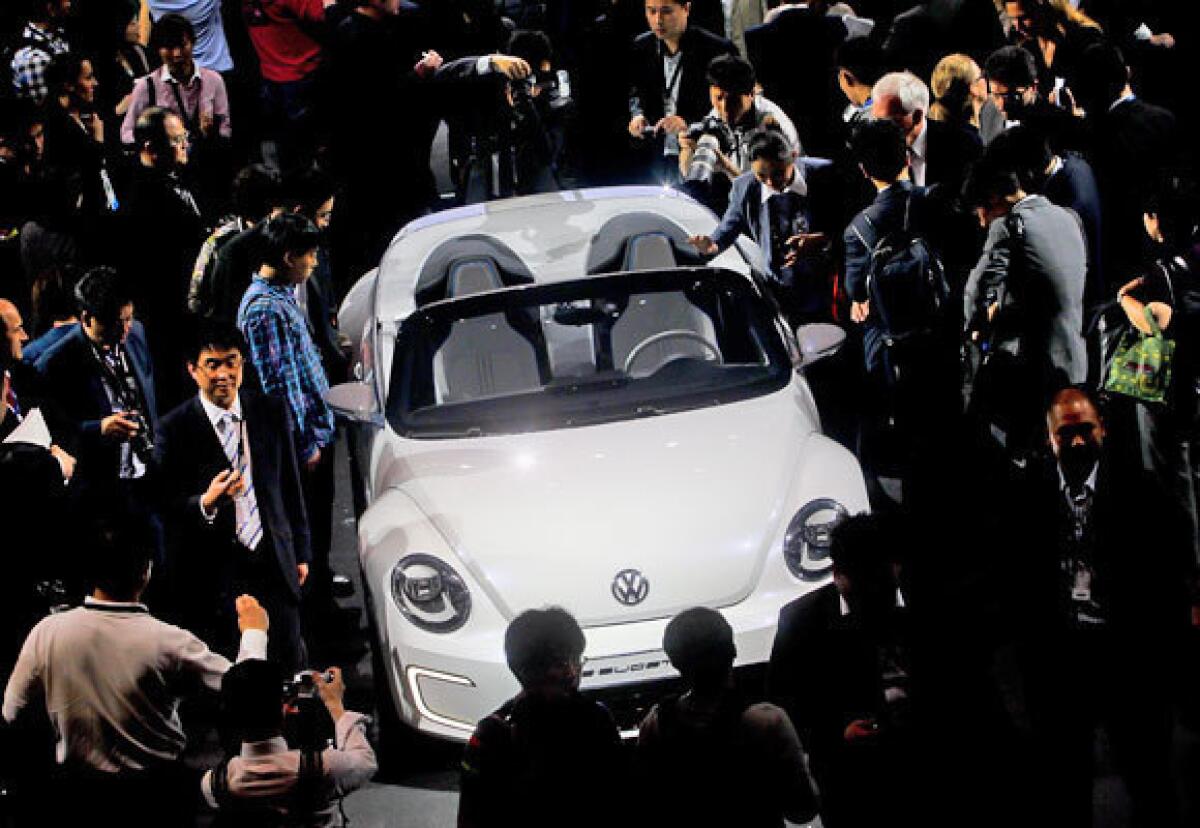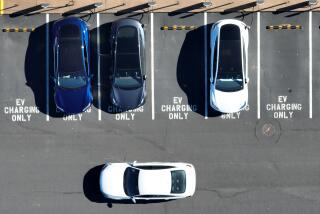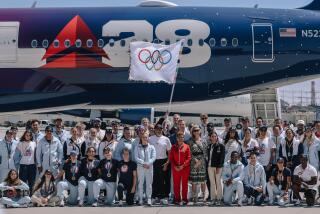Settlement may bring EV infrastructure to California

In an unforeseen upside to the electric-power market crisis of 2001, a new proposed legal settlement between utility NRG and the California Public Utilities Commission would bring more than $100 million in new electric-vehicle charging infrastructure to the state.
Under the terms of the settlement, announced Friday by the commission and the Greenlining Institute, an advocacy group, NRG would be installing at least 200 public fast-charging stations and the infrastructure for 10,000 plug-in units at about 1,000 locations across the state. Some of the new equipment would go to low-income neighborhoods, where such infrastructure is in very short supply.
The plan was submitted Friday to the Federal Energy Regulatory Commission, which must approve the plan.
The Los Angeles Basin would receive 110 fast-charging “freedom stations” under the plan, as well as other infrastructure. San Francisco would receive 55 stations, San Diego 20, and the San Joaquin Valley 15. Twenty percent of all the new gear for electric vehicles, or EVs, would go to low-income areas.
“It’s really exciting, and I think it could be a real game changer in California,” said Nancy Ryan, deputy executive director for policy at the Public Utilities Commission. “A lot of automakers are preparing to introduce EVs. We’ve got the [Nissan] Leaf and the [Chevy] Volt on the market right now, but there’s quite a few more that are supposed to come in next year. We hope it’ll help the automakers sell cars: There’s going to be a lot of infrastructure in California. If you buy an EV, you’re going to be able to get around.”
In 2001, a series of blackouts and brownouts across the state revealed the vulnerability of the grid to manipulation by unscrupulous traders and led to new scrutiny of spot markets and the long-term power contracts signed the state. One of the most egregious offenders, Texas-based Enron, later famously imploded in one of the biggest corporate accounting scandals in U.S. history.
The Public Utilities Commission began, Ryan said, “vigorously litigating and pursuing settlements” to regain money paid by the state and utility customers, and has settled dozens of suits in the last 10 years.
This one, however, is different. The commission’s case was originally against Dynegy, whose assets were later purchased by NRG.
“In virtually all of the other cases, we’ve settled for cash,” Ryan said. “This was a truly unique set of circumstances where the successor company for Dynegy, NRG, was considering coming into California to provide EV charging services; they have a business in Texas to do that already, and they were buying the California market. They approached the commission and proposed an in-kind settlement.”
“Because of where they were situated as a business, our assessment of the strength of our litigation position after 10 years, and the role the commission has been playing in supporting the introduction of electric vehicles in California, there was kind of a convergence of interest and opportunity here, and so we decided to pursue an in-kind settlement.”
Overall, NRG has paid about $300 million in cash to settle suits regarding short-term market manipulation by Dynegy. The new settlement, involving long-term contracts, puts more than $100 million into EV infrastructure.
“We at Greenlining have been watching this, and we’ve been really concerned about the roll-out of electric vehicles,” said Vien Truong, director of green assets at the Greenlining Institute, which works on economic-justice and other issues in low-income neighborhoods. “We want to make sure that communities of color are able to access some of that as well.”
The institute issued a report last year called “Electric Vehicles: Who’s Left Stranded?” It chronicled how electric vehicles and low-emissions initiatives are often not targeted for low-income neighborhoods, which often have the dirtiest air and most health risks associated with emissions.
“Right now, with the budget deficits, we’re seeing public transportation options like buses cut down,” Truong said. “This will be one of those solutions that will help fill in those gaps. We’re expecting low-income communities to have access to free or affordable car-sharing opportunities so that they can do some things like go to job interviews and pick up groceries. Some of these things that might not be easily accessible to people now.”
Beyond the “freedom stations” outlined in the proposal submitted to the Federal Energy Regulatory Commission, NRG plans to install the infrastructure for thousands of future plug-in car charging stations at locations with multi-unit housing, workplaces and public sites. It is also working with Greenlining on a $4-million program to support low-income car sharing, workforce training and other programs, and paying $5 million to collaborate on the development of new charging and related technologies.
The plans are set to roll out after they receive the federal panel’s approval.
ALSO:
Judge orders testing of evidence in Judi Bari bombing
Whale Wars” Paul Watson on Faroes killing, online debate
Activists sue Obama, others over National Defense Authorization Act






